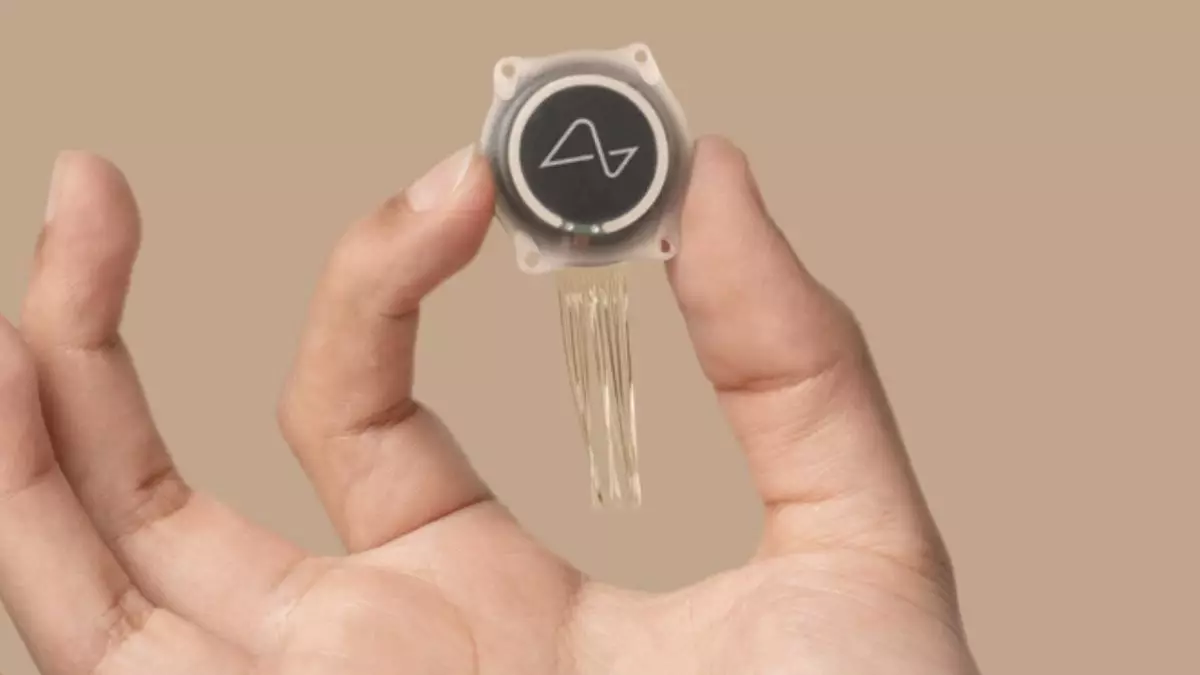The ambitious journey of Neuralink, led by the often controversial Elon Musk, has reached a significant checkpoint with the recent announcement of its Blindsight brain implant. With the endorsement of Breakthrough Device Designation by the FDA, the device holds the potential to revolutionize vision restoration for individuals blinded due to injury or congenital conditions. Yet, amid the fervor and excitement, a critical examination reveals both the promise and limitations that accompany such groundbreaking technology.
Elon Musk’s announcement invoking the iconic figure of Geordi La Forge from “Star Trek” cleverly captures public imagination. In his fervent communications, Musk emphasizes that Blindsight is engineered to restore vision even to those blind from birth, leading to the notion that a new era of opportunity is at hand. This claim, while tantalizing, requires scrutiny. Musk stated that the device could enable those who have lost their sight due to the loss of their optic nerve to regain vision, assuming that the visual cortex remains functional. Generally speaking, this taps into a well-established understanding in neuroscience — the brain’s plasticity and its capacity for adaptation can sometimes facilitate unique solutions to sensory impairments.
The technological heart of Blindsight involves a sophisticated microelectrode array implanted in the visual cortex. This approach, while innovative, is not entirely novel; similar techniques have been employed in various experimental settings. What makes Neuralink’s endeavor distinct, however, is the scale at which they aim to operate. Musk’s statement about providing visual input comparable to “Atari graphics” hints at the current limitations, while also suggesting a future trajectory of improvement. The vision may be rudimentary at first, but Musk’s proclamation of potential enhancements to even surpass natural vision capabilities is indeed a bold claim, one that deserves further inquiry.
The term “low resolution,” as indicated by Musk, requires an accurate contextual understanding. The numbers in the realm of neural interfacing often tell a sobering story. Past attempts revealed that implanting a limited number of electrodes—sometimes merely a few dozen—restricted the resolution of the resultant visual perception. Current advancements in electrode density at Neuralink could significantly improve outcomes, but the comparative resolution of even vintage gaming consoles poses a daunting challenge. With an Atari 2600 reaching a dizzying 30,000 pixels, the venture remains a long journey from achieving even this foundational visual standard.
Moreover, the prospect of granting sight to those blind from birth adds layers of complexity. Current research into the workings of the human brain elucidates that individuals who have never experienced visual stimuli may lack the necessary navigational frameworks to interpret what they actually see. The concept of “seeing” is intrinsically tied to one’s experiences, and a blind individual’s visual cortex may remain conceptually disconnected from an experiential understanding of sight. By suggesting that his device could overcome these biological challenges, Musk appears to lean into a simplification that can mislead both the public and stakeholders in the blind community, who often endure the insensitivity of presumptions held by those unacquainted with their experiences.
As is often the case with Musk’s announcements, a blend of innovation and overreaching optimism creates a complex narrative. While many would enthusiastically cheer for any advancement that offers hope to people with disabilities, a responsible presentation of such capabilities is essential. The perhaps naive optimism surrounding the possibilities of Blindsight must be tempered with intellectual honesty regarding what it can realistically achieve, how the technology operates, and who it will ultimately benefit.
To conclude, while Neuralink’s Blindsight holds the promise of advancing neurotechnology for vision restoration, it is critical to maintain balanced expectations. Significant advancements in both technology and our understanding of the human brain are essential for such endeavors to make a true impact. As we look toward the future, it is incumbent upon Neuralink and its founder to unite their vision with a grounded comprehension of the challenges that lie ahead. Only through balancing innovation with responsibility can they hope to navigate the complicated landscape that intersects ethical considerations, scientific realities, and the aspirations of those whose lives may be transformed by this groundbreaking technology.


Leave a Reply